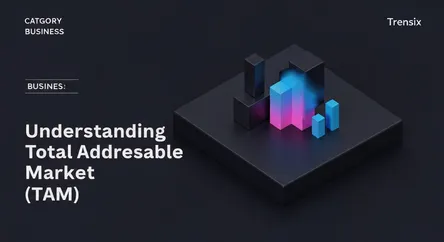Business
Understanding Total Addressable Market (TAM)

Learn what Total Addressable Market (TAM) is and why it's a crucial metric for startups seeking investment, defining strategy, and proving scale.
What is it?
Total Addressable Market (TAM) represents the total revenue opportunity available for a product or service if 100% market share were achieved. It’s the broadest view of a market's potential. TAM is often used alongside two subsets: the Serviceable Available Market (SAM), which is the segment of the TAM targeted by your products that is within your geographical reach, and the Serviceable Obtainable Market (SOM), the portion of the SAM you can realistically capture. Calculating TAM is a foundational step in validating a business idea.
Why is it trending?
In the high-stakes world of startups and venture capital, TAM is a critical metric for gauging a company's potential for scale. Investors use it as a quick filter; a small TAM suggests limited growth potential, making it less attractive for high-risk investment. A large, well-defended TAM is a core component of any compelling investor pitch, demonstrating that the founders have done their homework and are targeting a significant opportunity. As data-driven decision-making becomes standard, a solid TAM analysis is non-negotiable for anyone seeking funding.
How does it affect people?
For founders and entrepreneurs, TAM directly impacts their ability to raise capital and set strategic goals. A clear understanding of the market size shapes product development, marketing strategy, and expansion plans. For investors, TAM is a key tool for due diligence, helping them assess the potential return on investment and compare different opportunities. Essentially, it determines which ideas receive the funding needed to grow, directly influencing the direction of innovation and which new products or services ultimately reach the public.